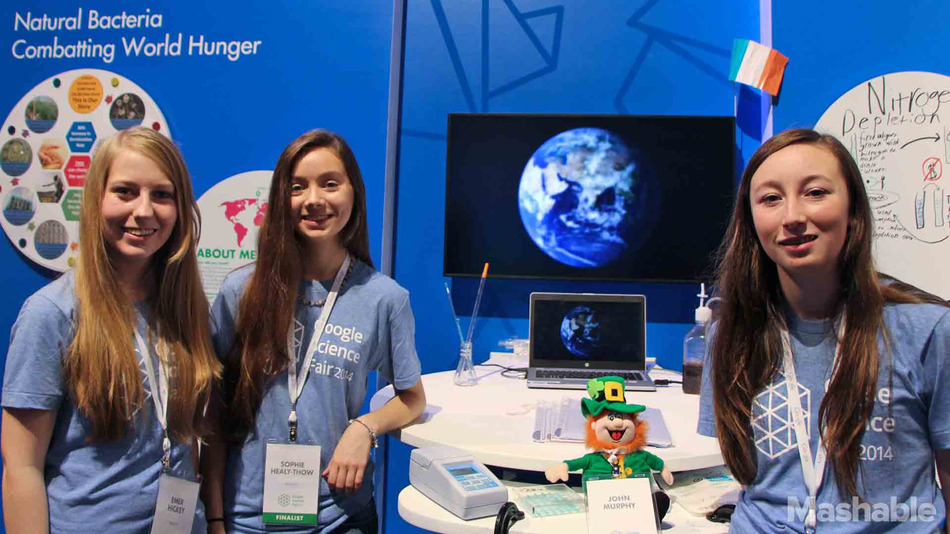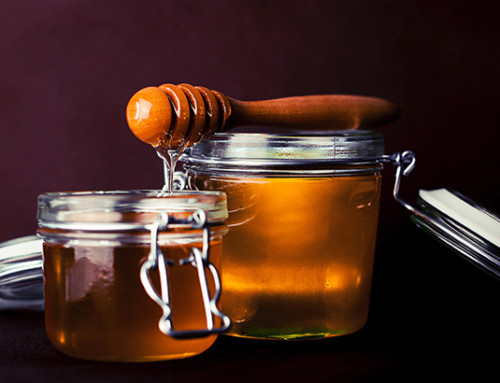It’s that time of year again where science fairs are in full swing, and future scientists are abuzz with great ideas. We find it fascinating to see what projects students come up with, and what the future of our world might someday look like. In honor of upcoming science fairs, we want to share one of our favorite projects from last year: the winners of the Google Science Fair, three young girls with an idea to feed the world using microbes.
Ciara Judge (16), Sophie Healy-Thow (17), and Emer Hickey (16) came up with an innovative way to feed the world that involves one of our favorite subjects: microbes. In essence, treating plants with bacteria could help farmers grow more food faster without genetic modification.
Have you read the book, The Martian? It’s the same concept used by Mark Watney, the astronaut stuck on Mars, who uses human waste to support the growth of potatoes in Martian soil. The idea of using microbes to increase food production is not entirely new or foreign. It’s starting to get more traction and become a reality, not just out of interest but out of necessity.
According to the United Nations World Food Program, more than 870 million of the world’s population are malnourished. In developing countries, malnutrition contributes to the death of 2.6 million children each year, and 1 of 6 children is underweight. In order to feed a global population that is projected to reach 9 billion by 2050, we need to increase agricultural yields by 70-100%.
There is a definite need for improvements in food production, and the winners of last year’s Google Science Fair saw that need and ran with it.
Bacteria: The Roids of Plant Growth

As we have pointed out over and over again in our blog posts, bacteria aren’t so bad. In fact, many of them are very, very good AND abundant! The key to the success of this science project is a type of bacteria called rhizobia. Rhizobia lives inside nodules on plant roots, and it helps plants grow by converting nitrogen from the air into helpful compounds like ammonia. Hickey discovered rhizobia when gardening with her mother, and thus an idea was born.
Rhizobia are only found on certain plants, like peas and beans, so the girls had to experiment to determine if they would be beneficial to other species that are just as crucial to our food supply, like barley and oats.
They used homemade lab equipment to test rhizobia’s effects on barley and oat seeds. To do this, they had to grow bacteria and inoculate the seeds. After preparation, they had to incubate the seeds and check them every 6 hours to measure how long it took germination to take place.
They started with 12 seed trays as their initial small-scale trial, and once that was successful, they expanded to growing plant boxes in a backyard garden for 6 weeks. The girls then harvested the plants, dried them, and weighed them to determine overall crop yield. They repeated these steps over an 11-month period, expanding into a field trial with 3,600 seeds.
The girls conducted over 120 experiments, manually recording more than 120,000 measurements. Their findings: the rhizobia sped up the rate of seed germination by 50% and increased crop yield by as much as 74%. This award-winning project could have a deep impact on the future of our world.
Rhizobia isn’t the only player in the game, and there is a lot more we can learn about how microbes support plant growth. Just read this report from the American Academy of Microbiology, and you’ll start to get a bigger picture of how crucial microbes are in supporting other living things.
So, if three high school students can get such great results and findings using homemade lab equipment, imagine the possibilities if a world of scientists put their minds and resources together. This is what we love about science fairs and young scientists, who open our minds to great possibilities.
With that in mind, best of luck to the next generation of scientists getting ready to share their months of hard work and dedication with the world!







Leave A Comment